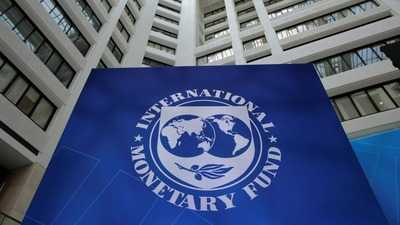
IMF raises India's growth forecast in FY26 to 6.6%
14 Oct 2025
The International Monetary Fund (IMF) has raised its growth forecast for India's economy in the fiscal year 2025-26 (FY26).
The IMF now expects a growth rate of 6.6%, up from the earlier estimate of 6.4% made in July.
This revision comes as part of its latest World Economic Outlook report released today, which highlights India's resilience amid global economic challenges and trade tensions.
Strong Q1 performance boosts IMF's India growth projection
Economic momentum
The IMF's revised forecast for India is largely due to the country's strong performance in the first quarter of FY26.
The economy grew at a rate of 7.8% during this period, marking its fastest pace in over a year.
The IMF said, "In India, growth is projected to be 6.6% in 2025 and 6.2% in 2026."
Global growth forecast downgraded by IMF
Global outlook
Despite India's positive outlook, the IMF has downgraded its global growth forecast.
The fund now expects global growth to slow from 3.3% in 2024 to 3.2% in 2025, a reduction of 20 basis points from July's estimate of 3.4%.
The IMF also projects that the world's economy will grow at an average annual rate of 3.2% between 2027 and 2030, well below the pre-pandemic historical average of 3.7% (2000-2019).
Tariffs' impact on global growth
Tariff effects
Pierre-Olivier Gourinchas, the IMF's Chief Economist, commented on the impact of tariffs on global growth.
He said, "The increase in tariffs and its effect has been smaller than expected so far."
However, he also warned against premature conclusions about the lack of impact from tariff increases on the global growth.
Report highlights downside risks to global growth
Growth risks
The IMF's report also highlighted several downside risks to global growth, including prolonged trade uncertainty, labor supply shocks, fiscal vulnerabilities, financial market fragilities, and a sudden repricing of new technologies.
It noted that the medium-term growth prospects are dimming for about two-thirds of the world economy.
Emerging market and middle-income economies are facing the most pronounced slowdown, while the poorest countries hit by protracted conflict are at higher risk of losing growth momentum.